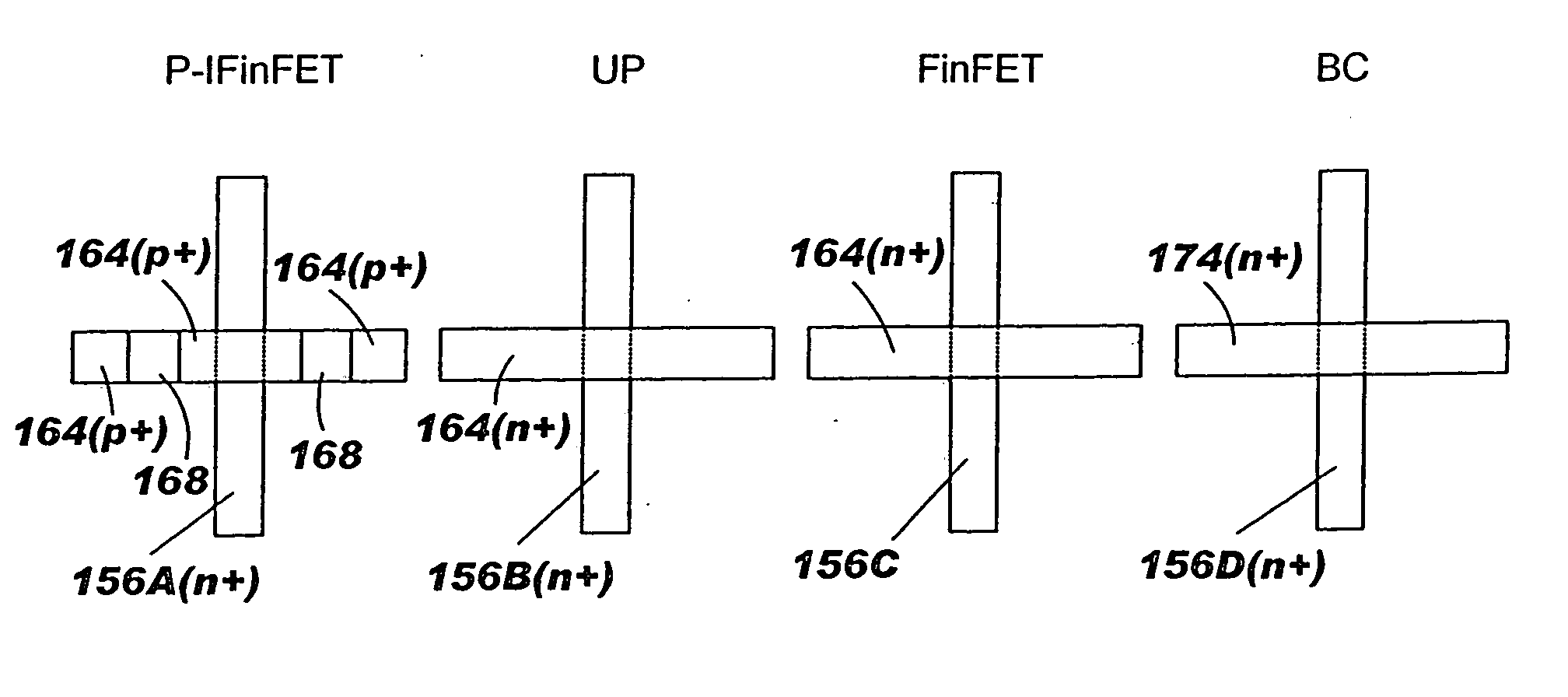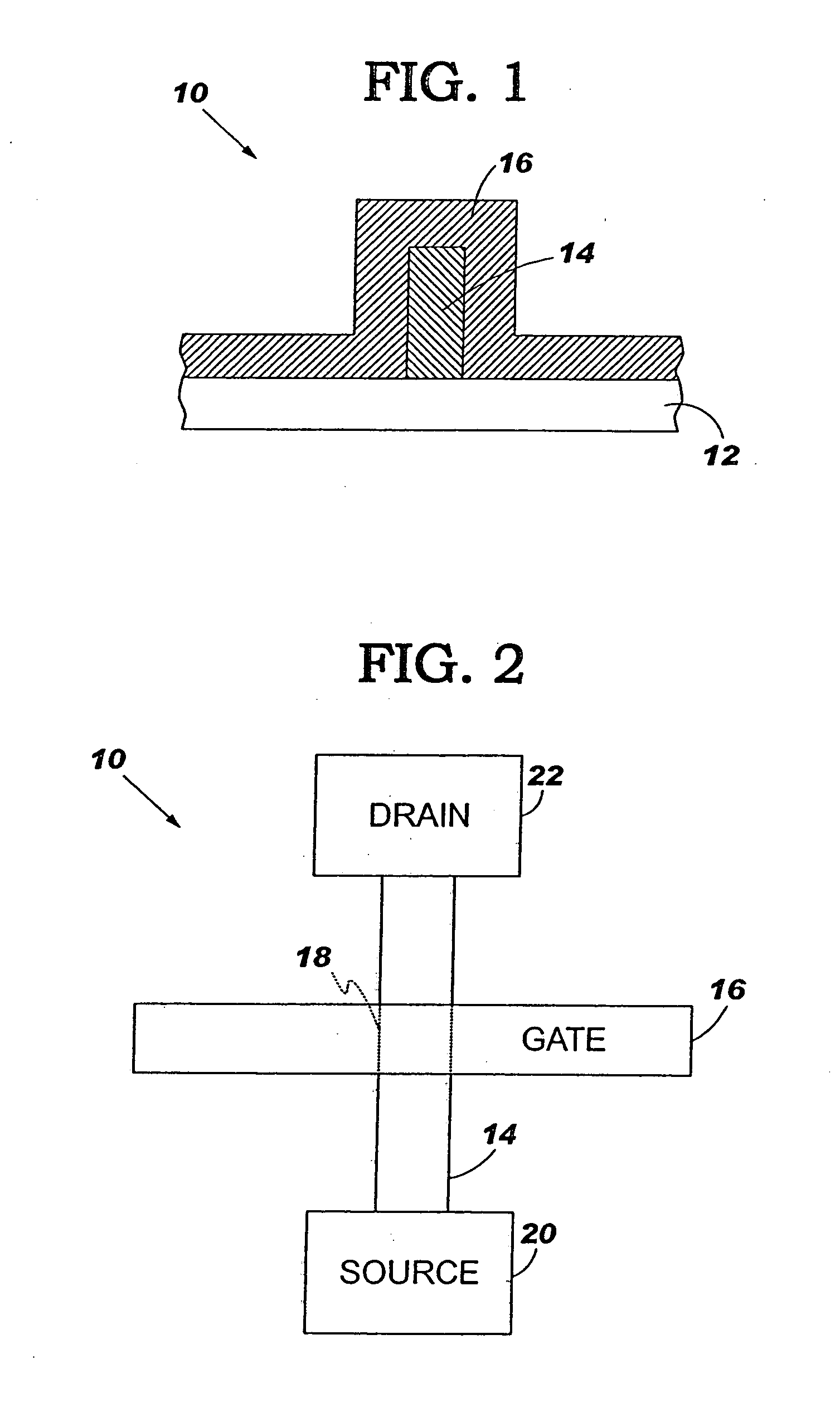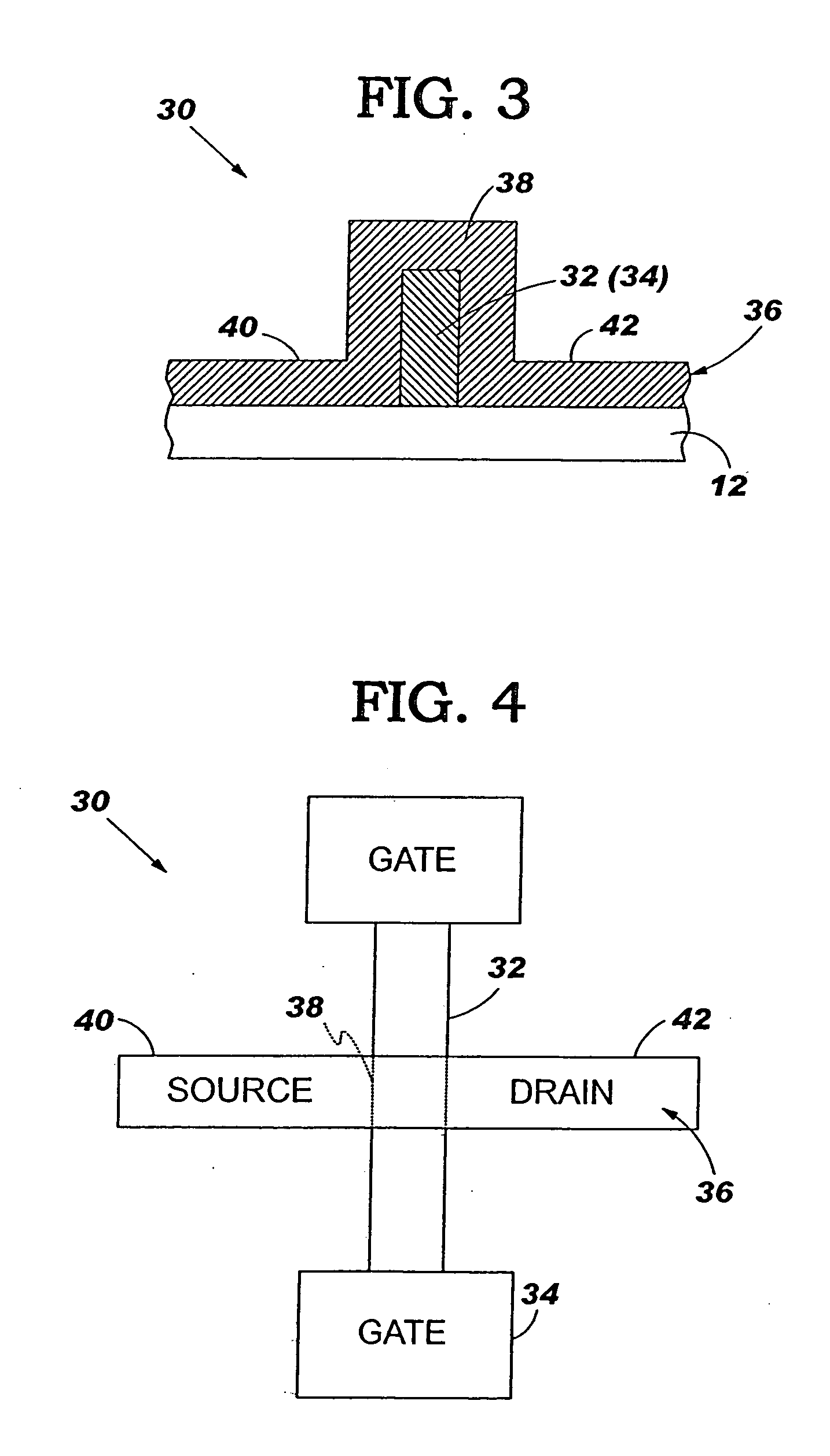Finfet sram cell using inverted finfet thin film transistors
a thin film transistor and inverted finfet technology, applied in the field of integrated circuits, can solve the problems of unabated demand for higher and higher density srams, and achieve the effects of reducing surface area, reducing the number of transistors, and simplifying the layou
- Summary
- Abstract
- Description
- Claims
- Application Information
AI Technical Summary
Benefits of technology
Problems solved by technology
Method used
Image
Examples
Embodiment Construction
[0023] The present invention addresses the above-mentioned problems, as well as others, by providing an inverted FinFET thin film transistor, and a static random access memory (SRAM) cell that is formed using inverted FinFET thin film transistors.
[0024] A cross-sectional view of a conventional FinFET thin film transistor 10 is illustrated in FIG. 1. A plan view of the FinFET transistor 10 is illustrated in FIG. 2. In this example, the FinFET transistor 10 is formed on an insulating layer 12 (e.g., a layer of SiO2). The FinFET transistor 10 comprises a fin 14, typically formed of silicon or other suitable semiconductor material, and a gate 16, formed of polysilicon or other suitable conductive material, running over the fin 14. A channel 18 is formed in the portion of the fin 14 that extends under the gate 16. As shown in FIG. 2, the source 20 and drain 22 of the FinFET transistor 10 are located at opposing ends of the fin 14. The benefits provided by such a FinFET transistor 10 inc...
PUM
 Login to View More
Login to View More Abstract
Description
Claims
Application Information
 Login to View More
Login to View More - R&D
- Intellectual Property
- Life Sciences
- Materials
- Tech Scout
- Unparalleled Data Quality
- Higher Quality Content
- 60% Fewer Hallucinations
Browse by: Latest US Patents, China's latest patents, Technical Efficacy Thesaurus, Application Domain, Technology Topic, Popular Technical Reports.
© 2025 PatSnap. All rights reserved.Legal|Privacy policy|Modern Slavery Act Transparency Statement|Sitemap|About US| Contact US: help@patsnap.com



